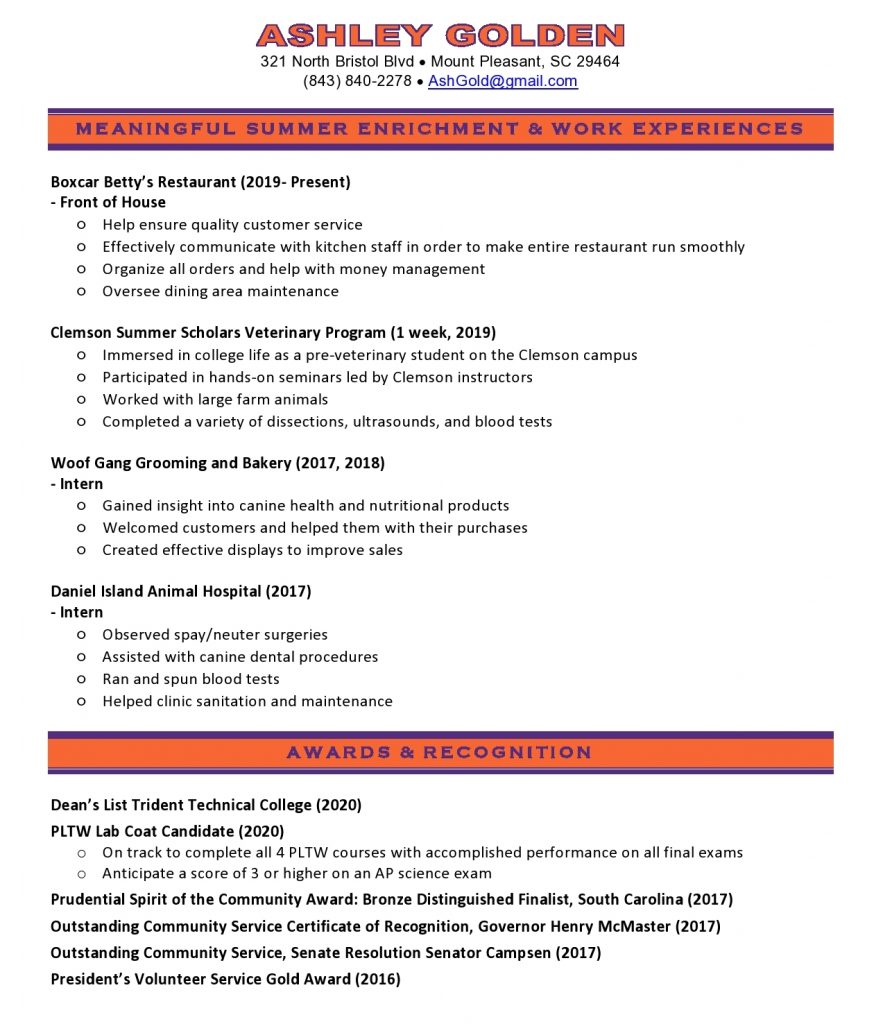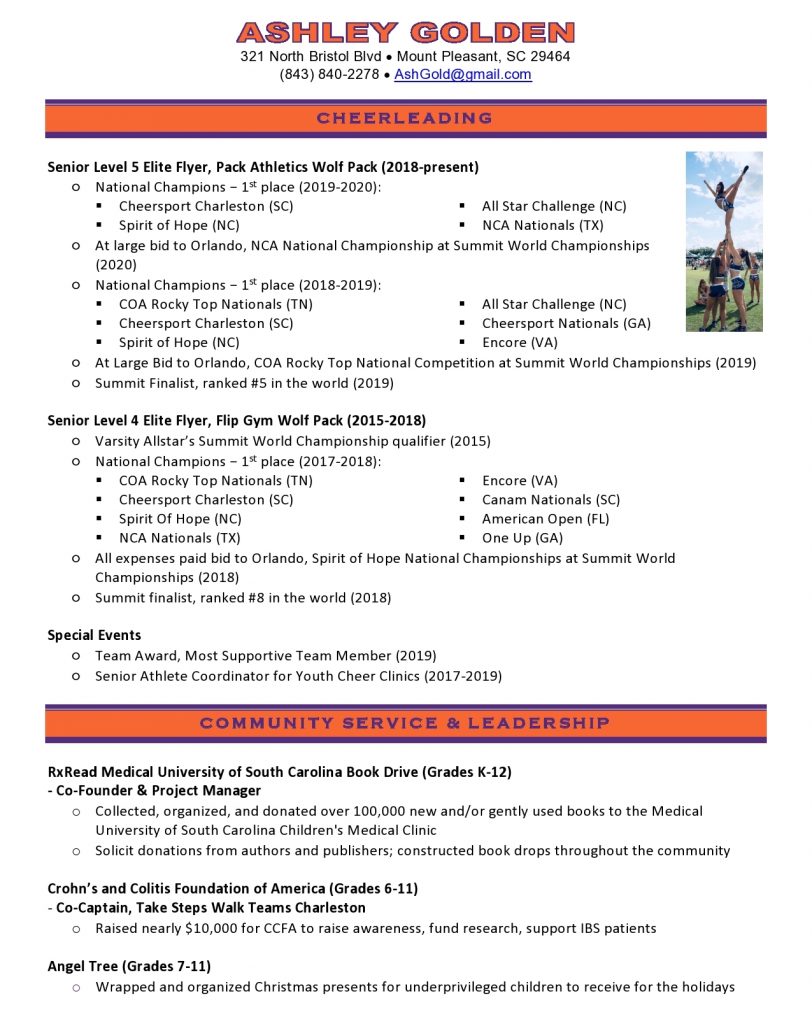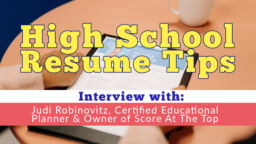TUN sits down with Judi Robinovitz, a certified educational planner and owner of Score At The Top, to discuss resume tips for high school students.
TUN: Judi, thanks so much for joining.
ROBINOVITZ: My pleasure. Thank you for having me.
To start off, why is it important for high school students to have resumes? When would a high school student need a resume?
First of all, a high school student would need a resume for a college application, especially for a more selective college.
Your academic record is the most important factor in college admission, so you do everything you can to polish that academic record with course rigor and grades. It’s important for the extracurriculars to have that same shine.
Your extracurricular commitment is the third most important factor in college admission for most colleges. It follows closely after academic record and test scores, even for those colleges that are test-optional.
I believe that a student should start creating a resume as early as perhaps middle school. At that point, it’s nothing formal. It may be just a list that the student and her mom are keeping track of. But by ninth grade, it really matters.
Keep some detailed notes of activities — what you’ve done, why you’ve done it and how you’ve done it — so that as time goes on in high school, that can be turned into a flashier resume.
Note: For more college application tips, check here.
Great. So, oftentimes, high school students may feel as if they lack experience. What should they include in their resumes?
High school students have much more experience than they actually realize.
You could be a performer, an artist, a student government debater or a member of a couple of clubs or community service organizations.
It’s not just your school-based activities. They could be activities that are a part of, let’s say, your church or your synagogue. Maybe you’re teaching Sunday school. Maybe you’re volunteering and helping at mass. Maybe you did a special project for your bar mitzvah or bat mitzvah and you’re continuing that throughout high school.
It’s how you spend your summers. Yes, it’s great to go to aunt Lizzy’s and stay on the beach in New Jersey, but colleges want to see that you had an enriching summer. So that could mean that, perhaps, you took some AP courses for credit online (or any kind of courses for credit) or you taught yourself a programming language. You could have participated in a community service project. Perhaps you did a program on a college campus. Perhaps you were working or had an internship.
And certainly include your hobbies. I wouldn’t have a huge long list of hobbies. If you have too many hobbies, colleges may think, “Well, no wonder she’s not getting As because she’s too busy surfing, boating and fishing.” But if you have one or two interesting hobbies — maybe you love to cook, you’re raising a pet pig or you have a butterfly garden — that’s something that adds a little bit of interest to who you are.
So, it’s what you are doing other than hanging out with your friends, sleeping and doing homework. What are the productive things that you’re doing? And hopefully some of them will support your potential choice of major.
Great. So, students are going to have to describe all of those extracurricular activities, work experience or academic accomplishments. So, do you have any tips for how students should write descriptions in their resumes?
Yes, definitely. So, for each activity, first of all, it should include when you’ve done that activity. Typically, it’s done not necessarily year-by-year but instead grade-by-grade. For example, let’s say that I’m in student government. So, my resume might say “student government (9-12),” indicating I’ve done it for all four years.
Immediately under that title, I would like to put my leadership roles either chronologically or reverse chronologically. The title of student government and those leadership roles should be bolded, italicized, underlined or something to highlight them. When people read resumes, they don’t typically read every single line. So you want your most important things first, which is why I like to show the leadership role. And if my only leadership role is a student representative, okay so be it. But hopefully I’ve worked my way up to a higher and higher role.
Then there would be bullet points. You don’t need a lot of bullet points, but your bullet point should cover, first of all, why you did this particular activity, why it was important to you and what you feel you contributed. There’s another bullet point — at least one other bullet point — that indicates what you have achieved and your impact on other people. Then there would be a few bullet points about what you actually did. Try to make it quantifiable if there are numbers involved. It’s not just, “I help plan community service events.” Be specific. Instead, write, “I took an active role in developing our new Halloween haunted house for underprivileged students.”
They’re not sentences. They’re phrases. They should almost always begin with an action verb in the correct tense, things like “organized” or “participated in” if they were past tense. Use present perfect tense if you’ve done something in the past and it’s continuing. So, it’s perhaps three, four, five, or six bullets.
If it’s something in which there were competitions, then you should be listing your most important competitions first, which typically means reverse chronological order. It might be something like “2nd Place, forensics, Catholic Forensic League (2019)”
Colleges love kids who compete, who have a track record of not necessarily winning but placing in the top.
And if it’s an activity that you feel that, “Okay, well I don’t know what to say. I played soccer for four years.” Let’s say you weren’t even a captain. But, you could indicate that it was JV or varsity or both and when you moved up. Maybe you were only one of three freshmen who moved up to the varsity team at the end of the year. Include what position you played, whether your team made it to regions, districts or state. Maybe there’s something special about your role. Were you the cheerleader for the team? Did you help the coach with certain things? Did you help organize practices? So, it might just be one or two bullets, and maybe it’s no bullets at all. In that case, it would be sort of lower down.
Your resume really should be organized functionally. And you can create your own topics. So, you might have one that’s called “Law and Politics” because maybe you took a couple of courses in law. Maybe you were involved in some kind of a moot court. Maybe you were also involved in Junior State of America and also student government. So, you could sort of lump those together.
Or you could have something that says “Outreach and Science-Related Activities” because perhaps you’d like to go into health care. In that case, anything you’ve done science-related and anything that you’ve done to show your humanitarian nature in terms of community outreach could be lumped together.
If you have any specific honors, I always like to list them last. Things like “National Honor Society,” “AP scholar with honor” or “IB diploma candidate.” I think listing your honors last shows humility. And it’s also not necessary to indicate what your GPA is, what your SAT and ACT scores are or what AP courses you’ve taken, because those things are in other places on your resume.
Let me just add — another really important reason for having a resume is that roughly 900 universities today accept the Common Application. Those span from our nation’s most selective universities to far less selective universities. Almost any university you could name you’re going to find on the Common App.
The Common App does give you room for up to 10 activities, although I tell my students to not fill out all 10. More is not necessarily better. But, you only get 150 characters to indicate what you have done. And if you have a resume, it makes it pretty easy to take perhaps your first two or three bullets, abbreviate words, throw away superfluous or unnecessary words and get it down to a 150-character description. That way, in a five-second read, an admission officer can get the gist of what you have done for each activity.
Roughly a third of all Common App colleges now actually allow for a resume upload. And that’s in addition to filling out that special page (activities section) on the Common App. So, there are really two ways to hit them with what you have accomplished as a person and explain how you’re going to make contributions to their campus.
Great. So, you spoke a lot about formatting descriptions. What about the rest of the resume? Do you have any specific tips on what the format of the resume should look like?
Sure. First of all, there’s no rule for it. It could actually be sort of a fun resume, no matter how smart or serious of a student you are.
I love to see resumes with graphics because these are teenagers. They’re not yet ready for a very serious full-time job, but they’re showing off a little bit of who they are.
So if you are in the Key Club, you can have the logo for the Key Club. You can have some logos nicely arranged in the right places that will show exactly what each activity is.
I have a student who is a renowned equestrian. There are some pictures on his resume of him with his horse jumping. It sort of brings the resume to life.

Credit: Score At The Top

Credit: Score At The Top
One of the formats I really love is a table format. It has a very skinny left side that lists the activities and the leadership roles, and the right side has an overview statement and bullet points. It’s very easy to read. If I don’t have time to read the entire resume, I can just read down the left side and see the activities in the leadership role.
But if you have trouble working in tables, which takes a little bit of extra word processing skill, then certainly use a top-down type of resume where you have the name of the activity, the leadership role and then bullet points under that.
Most people will tell you that your resume should not be more than one page. I would say that’s very true if I’m out looking for an entry level job or perhaps even my second or third job. But as a high school student applying to college, your resume could span two pages. But it really should have a lot of white space because you want to invite the reader to read it. If it is so dense with words, people will be turned off.
Great. Thanks, Judi, for joining us today.
It’s my pleasure. Thanks for having me.
This interview has been edited for clarity.



